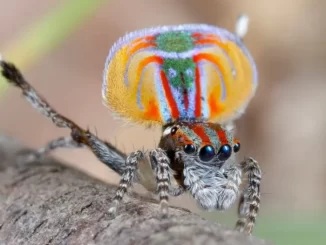
In this article, we will discuss the reasons why you should not declaw your cat and examine the advantages and disadvantages of cat declawing based on scientific research. Imagine waking up one morning to find your beloved cat scratching your furniture.
Feeling frustrated, you may contemplate declawing as a solution to this problem. However, before making that decision, it is important to fully understand the implications and consequences of declawing.

Why You Should Not Declaw Your Cat: A Closer Look
The topic of cat declawing has sparked debates among veterinarians and cat owners. Some argue that it is necessary to prevent scratching and furniture damage, while others believe it is a cruel and unnecessary procedure.
The Procedure: More Than Just Removing Claws
Cat declawing is a surgical procedure that involves the removal of an entire bone from each of the cat’s fingers, not just the claws or fingernails as commonly believed. This results in the permanent alteration of the cat’s anatomy.
The Negative Effects on Cats: Why You Should Not Declaw Your Cat
In 2018, a study conducted by Martell-Moran et al. compared the health and behavior of 137 declawed cats with 137 normal cats. The results revealed that declawed cats were more likely to experience issues such as back pain, house-soiling, biting, and barbering compared to non-declawed cats. Surprisingly, 63% of declawed cats still had bone fragments remaining after the surgery, leading to ongoing pain and discomfort.
Cats that are declawed, even when done perfectly with no bone fragments left behind, are more likely to exhibit negative behaviors such as house soiling and biting compared to cats that have not undergone declawing. This suggests that declawing has a negative impact on a cat’s overall well-being, regardless of the surgical technique used.
The Myth of Preventing Surrender or Euthanasia
Cat declawing advocates frequently claim that it can help prevent cats from being abandoned or euthanized. They argue that if cat owners are troubled by their pets scratching furniture, declawing offers a practical way to avoid the potential for surrender or euthanasia.
In 2021, a study conducted by Ellis et al. looked into the effects of the declaw ban in British Columbia on the number of cats surrendered to shelters and euthanized. Surprisingly, the study found no significant changes or even some improvement after the ban. The ban on declawing does not lead to an increase in cats being surrendered to shelters or euthanized, according to these findings.
Physical Consequences
Removing your cat’s claws through declawing can lead to various physical complications, such as chronic pain, lameness, arthritis, and an increased risk of infection. This is because cats rely on their claws for balance and climbing, so removing them can significantly impact their mobility and overall quality of life.

Behavioral Changes: Why You Should Not Declaw Your Cat
When cats are declawed, they lose their ability to defend themselves and communicate through scratching. This can lead to increased anxiety and stress, and they may resort to biting as a defense mechanism.
Alternatives to Declawing
Instead of declawing your cat, there are many options to address scratching issues. You can provide your cat with appropriate scratching posts, regularly trim their nails, and use deterrents such as double-sided tape or citrus scents to redirect their scratching behavior, all without needing surgery.
Nail Trimming
Keeping your cat’s nails trimmed on a regular basis is an important part of taking care of your feline companion. Trimming their nails every few weeks can help prevent them from becoming too sharp and causing damage to your furniture and other items in your home. It’s essential to be patient and use positive reinforcement to make the experience as stress-free as possible for both you and your cat.
Scratching Posts
It is essential to invest in top-notch scratching posts to cater to your cat’s natural scratching behavior. Opt for posts that are sufficiently tall for your feline to stretch their body fully and robust enough to endure their weight. Strategically place the scratching post in an easily accessible location and motivate your cat to use it by rewarding them with positive reinforcement and treats.
Deterrents
If your cat has a habit of scratching on certain furniture or areas in your home, don’t worry! There are ways to discourage this behavior. Double-sided tape, aluminum foil, or citrus-scented sprays have all been shown to be effective deterrents. It’s important to consistently use these methods and provide alternative scratching options to redirect their behavior.
Environmental Enrichment
In order for cats to thrive, it is important to provide them with mental stimulation and an enriched environment. This can be achieved by offering interactive toys, puzzle feeders, and vertical spaces such as cat trees or shelves. These will keep your feline friend engaged and content, and can prevent destructive scratching behaviors while promoting a happy and healthy lifestyle for your beloved pet.
Scratching Behavior Modification
If your cat continues to scratch in ways that are causing problems, it could be helpful to consult with a qualified animal behaviorist or veterinarian. They can provide helpful advice on how to modify your cat’s behavior and identify any underlying issues that may be causing the scratching.
The Importance of Your Cat’s Well-being
It is important to prioritize your cat’s welfare over any inconvenience or damage caused by scratching when considering declawing. Cats are intelligent creatures with complex needs and emotions, and by understanding and meeting these needs, you can create a harmonious coexistence for both you and your beloved feline companion.
Educating Others Why You Should Not Declaw Your Cat
You can help raise awareness about the harmful effects of declawing by educating those around you. Share informative articles, engage in meaningful discussions, and promote responsible cat ownership. By working together, we can strive towards a world where declawing is recognized as an unnecessary and cruel practice.
Does Declawing a Cat Hurt Them?
Yes, Declawing a cat is a highly invasive procedure that involves the amputation of the last bone of each toe, causing both short-term and long-term pain for the feline. This major surgery can result in complications such as infection, lameness, behavioral changes, and chronic pain, which can significantly impact the cat’s overall well-being. As a result, numerous veterinary associations and animal welfare organizations vehemently oppose declawing due to the associated pain and potential negative effects on the cat’s health.
Conclusion: Why You Should Not Declaw Your Cat
Scientific literature has made it clear that declawing cats is a harmful procedure that can result in various health and behavioral issues, even when executed flawlessly. Recent research has also debunked the notion that declawing prevents surrender or euthanasia.
Therefore, if you were considering declawing your cat, it is crucial to reconsider and explore alternative solutions such as providing scratching posts, nail trimming, or using soft nail caps. By understanding the risks and consequences of declawing, we can prioritize the well-being and happiness of our feline companions.
Remember, your cat’s claws are an essential part of their identity and well-being. Embrace their natural behaviors and find ways to coexist harmoniously without resorting to declawing. Protect your cat’s well-being by choosing alternatives that promote their natural behaviors and instincts.





Be the first to comment